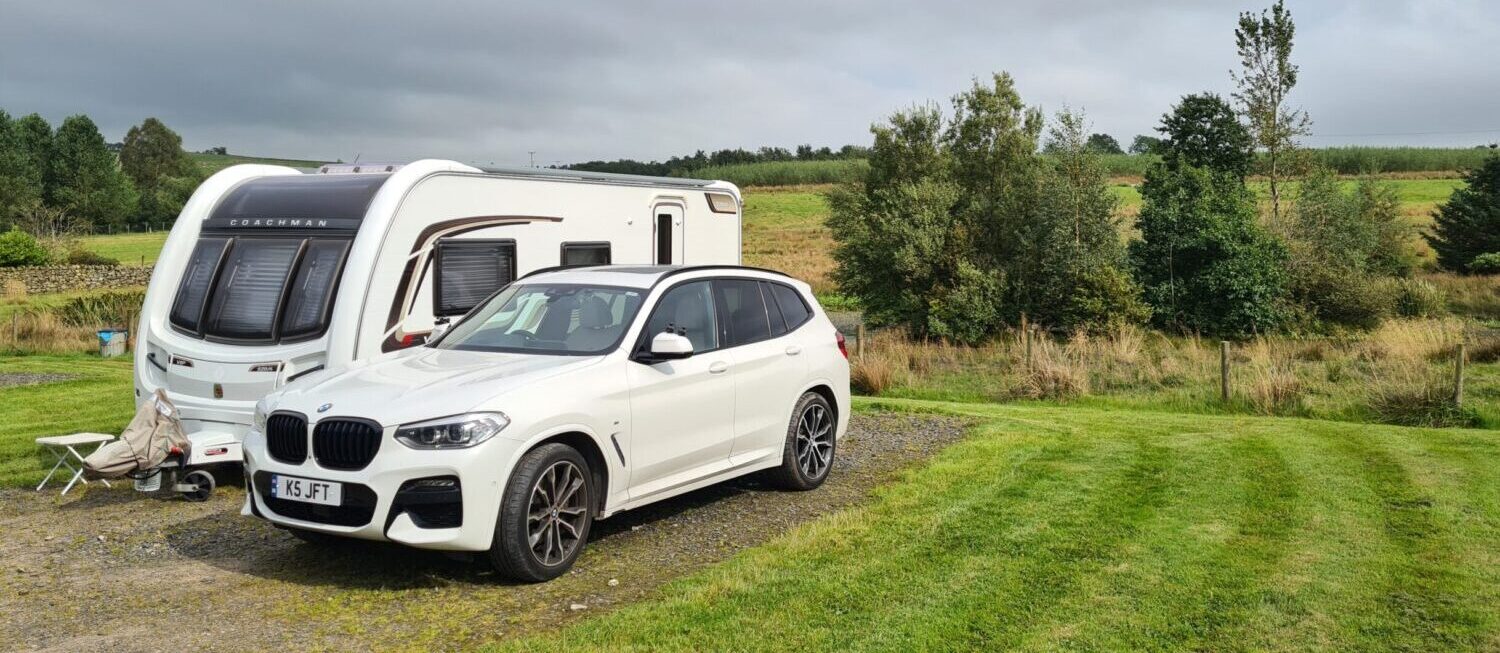We heard that there was going to be a football match in Madrid at the weekend. Our site is predicted to be super-full as opposed to just standard-weekend-over-occupied. So we decided to re-locate to Riaza, about 50 miles further away from the capital. Unfortunately we should have moved 150 miles. The place was littered with Liverpool fans. Let’s just say that a relatively small number of people created a lot of noise which continued until nearly 4 am. The site seemed unable – or probably more likely, unwilling – to control them. Apparently, the Civil Guard came to the gates four times but didn’t come in! The site owners found it easier to give anyone who complained a free night! Sad. And these were grown men not kids. Made us ashamed to be English. Luckily Liverpool won. I hate to think how they would have behaved if they had lost! (We have to admit that there were a small number of respectable fans on site – well, definitely one!)
A little bit of “tree maintenance” allowed us on to a lovely shaded pitch, sadly with a view of Liverpool!
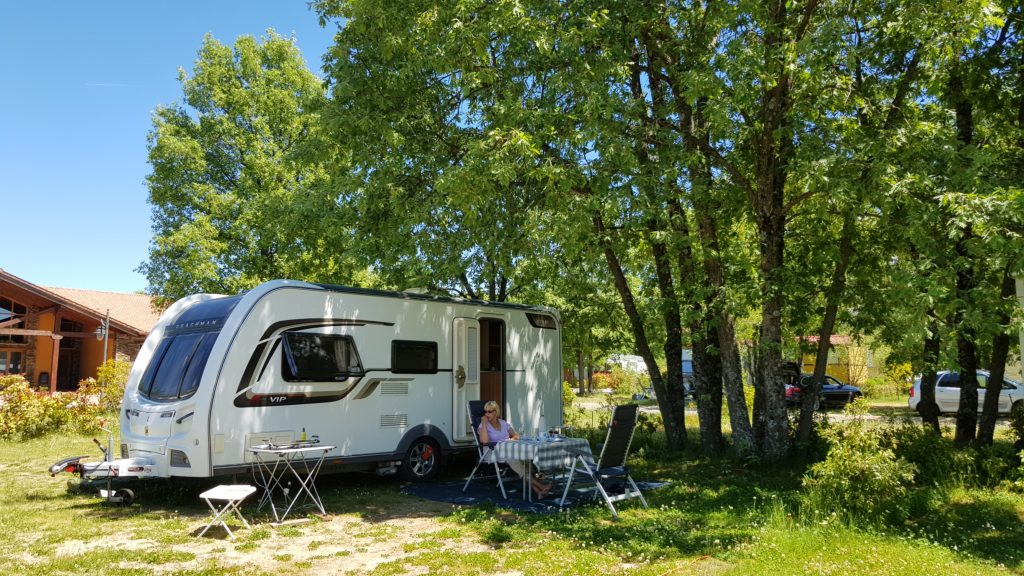
We found a bar full of locals in Riaza’s main square. The plaza was set up as the finishing point for the local hill racing event, the Riaza Trail Challenge. This event covers 65 km of the local mountainous terrain and includes a total of 5000m of ascent.
It had started at 9 am and, when we arrived at the finish (after a 200 m stroll), they had been racing for about 10 hours! Why would they? In temperatures close to 30 degrees! The thing is, most of them crossed the line hopping, skipping and jumping (probably with joy at finishing!) having barely broken a sweat!
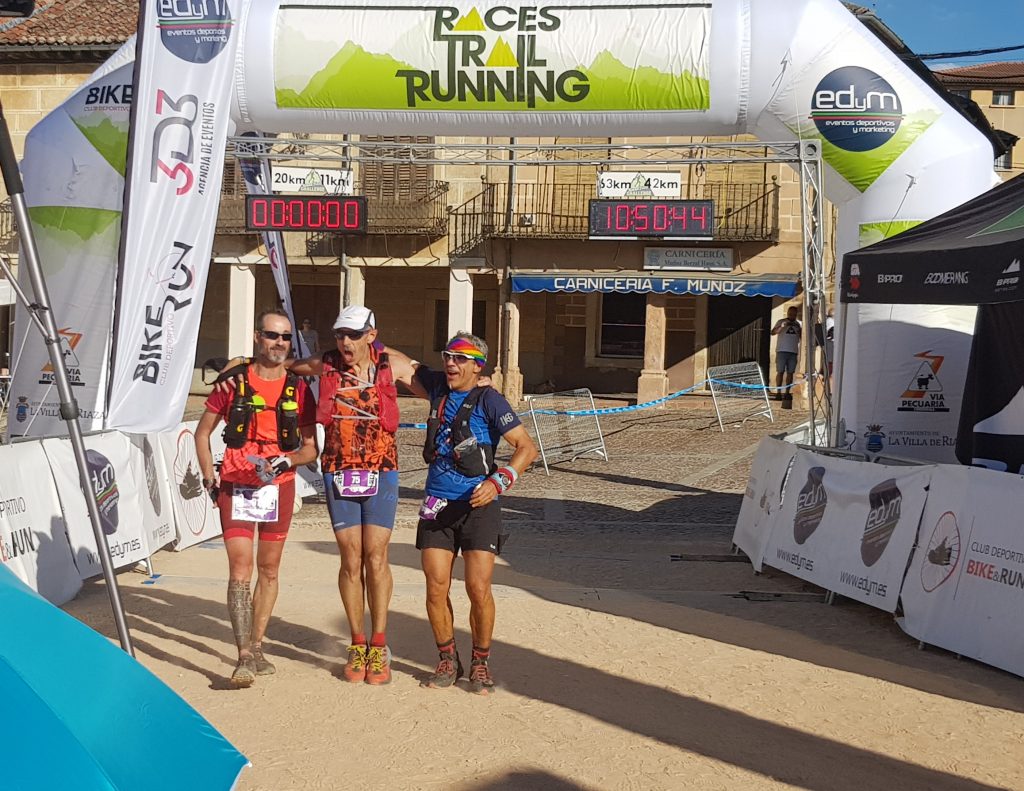
However, it is true that there looked to be some sore legs around. After a beer or two, we found some lovely, quiet country lanes around the village which didn’t involve climbing or descending more than 10 m or so. We did our own three mile trail trial. And we came joint first.
Near Riaza is a ski area – and there was still a little snow in the sheltered hollows high up on the mountain. Further to the East there is a collection of tiny villages known as the Red Villages. The countryside around here is very barren – and the soil is very red. The rocks are very red. The sheep are too. The houses are built out of local stone and the mortar uses local sand – so they too are, well, very red! Which is why they are know collectively as the Red Villages! Obviously!
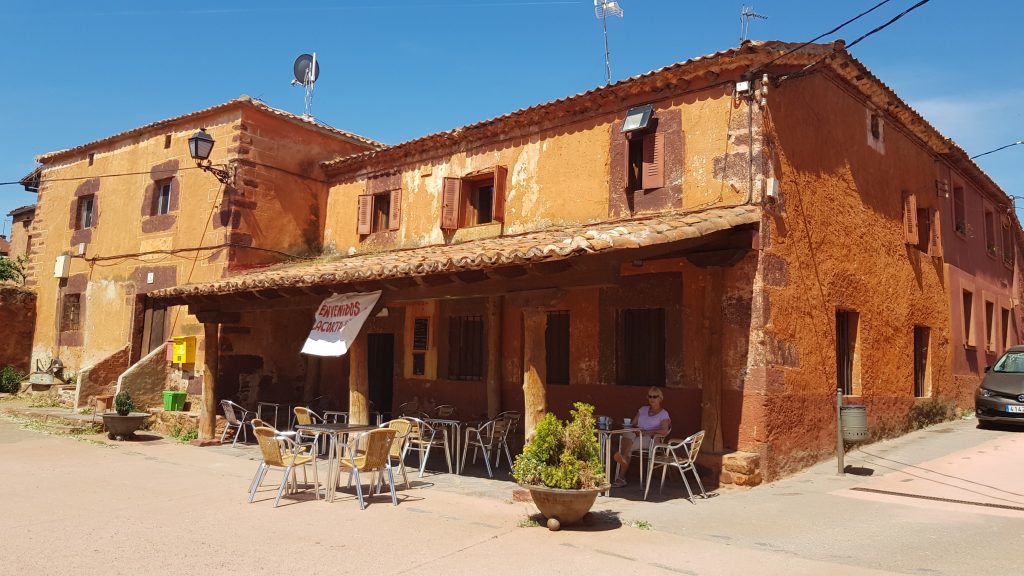
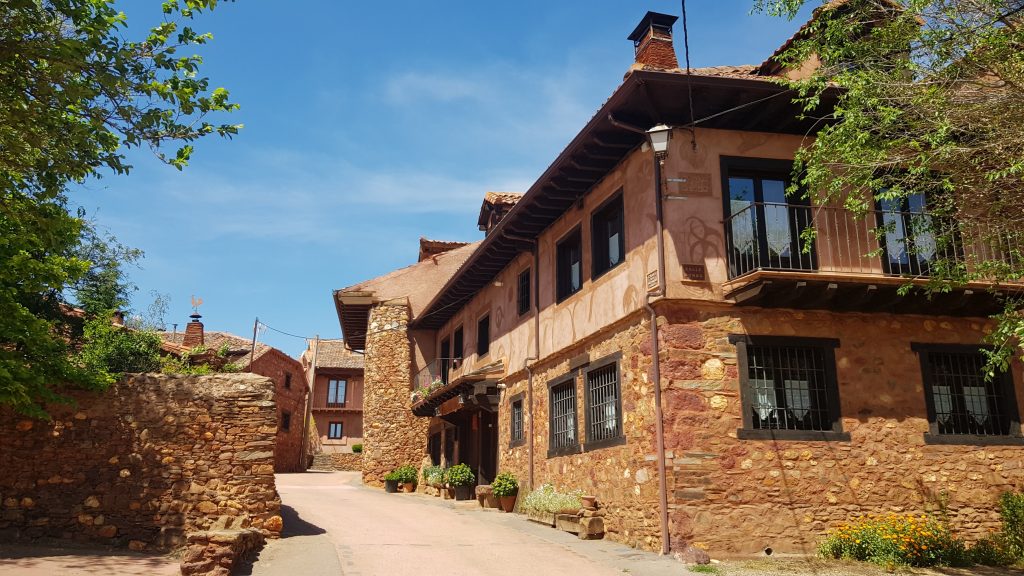
Our next stop was Segovia. The place we didn’t quite make the day we ended up in the Royal Palace at La Granja. Approaching from the South-east, the campsite, Camping Acueducto, was easily reached from the southern ring road. Except that road was being upgraded to Autopista standard and as a result half the junctions (including the one we wanted) had been summarily closed. So we still had to find the site by driving through the city just from the North-west side instead.
The campsite had the most ridiculous layout with literally hundreds of large concrete bollards. One at each corner of every pitch. And the pitches were tiny. It must be an absolute nightmare in high season.
Anyway we manoeuvred in and discovered that there was no level ground in either direction! Then some over-friendly Dutch couple pitched immediately behind us – even though the site was only about 15-20% full. We didn’t talk to them! Apart from to say that we hoped they didn’t snore!
Segovia is a magnificent city. It’s main claims to fame are the Roman aqueduct (after which our campsite is named) and the cathedral. The aqueduct, or more properly, the aqueduct bridge is about 830 metres long with a sharp bend part way along. It reaches 28.5 metres tall at it’s highest point with 6 metres deep foundations. It has a one degree slope and carried water from the River Frio some 17 kms away. In total there are 167 arches and it was built with no mortar or any other form of “glue”. It’s just a magnificent, self-supporting jigsaw puzzle!
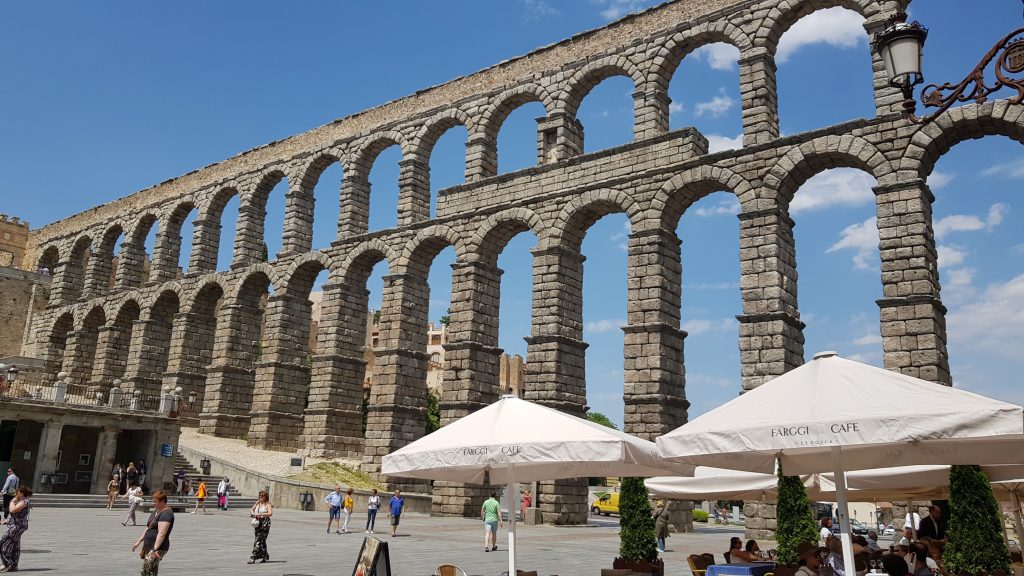
Once inside the city walls, water was distributed by gravity via an underground system of tunnels and channels. These have been mapped in recent times and their routes are marked by little brass images of the aqueduct set into the surface paving.
The rather more recent cathedral was built in the mid to late 1500s in a Gothic style.
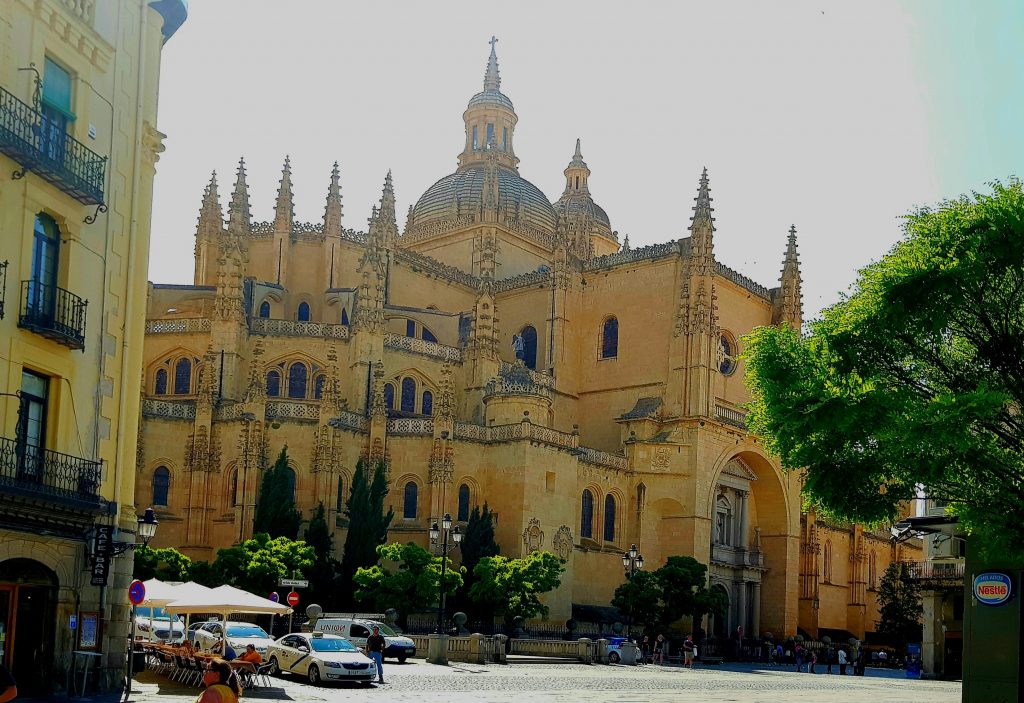
The vaults are 33 meters high by 50 meters wide and 105 long.
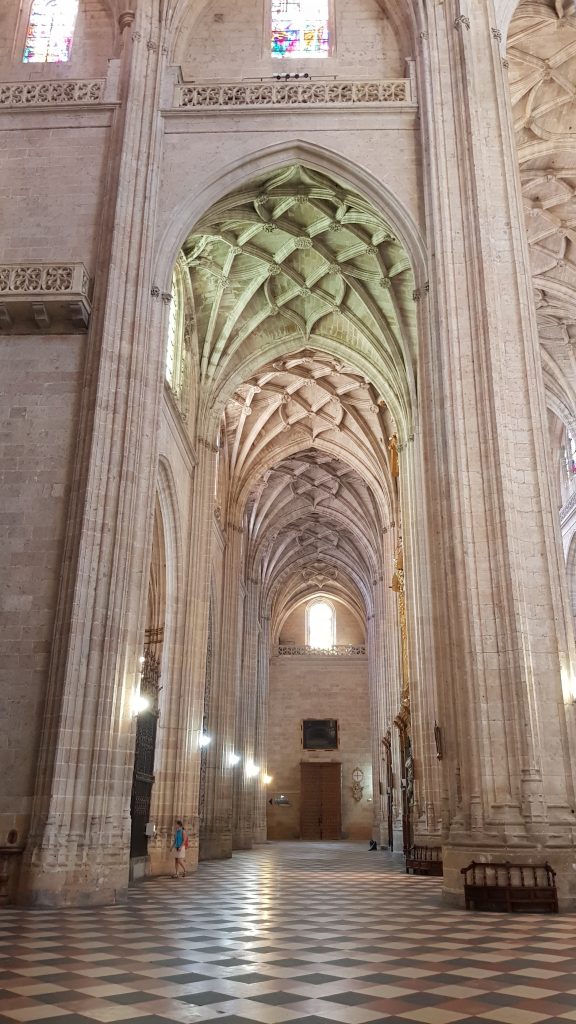
It was truly a massive space with stained glass windows and eight chapels around the North and South naves. These lit up automatically as we walked into them. There were some amazing paintings and carvings…
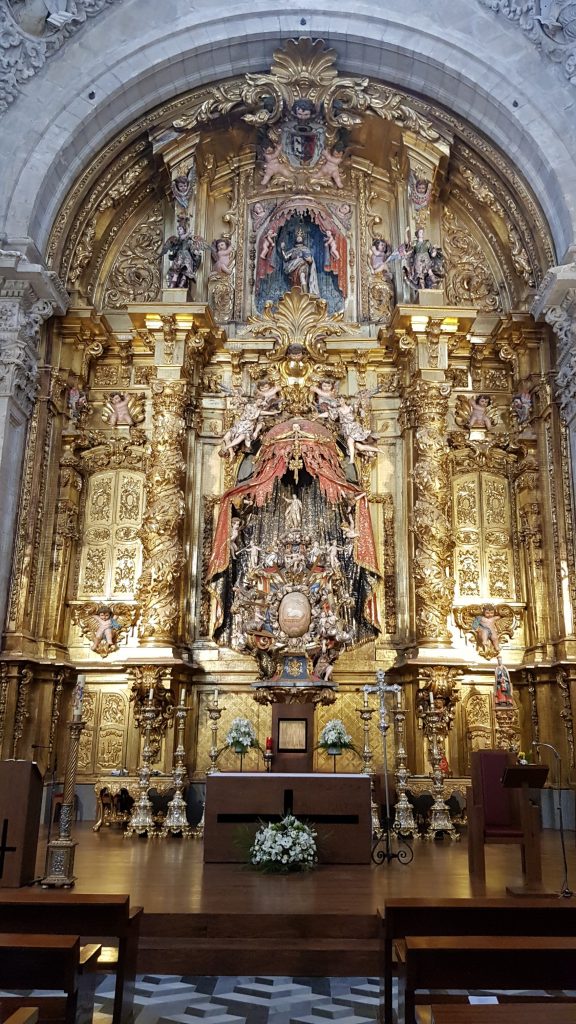
The bell tower, which we elected not to climb, reaches almost 90 metres. The current stone spire crowning the tower, dating from 1614, was erected after a major fire caused by a thunderstorm. The original spire, entirely Gothic, was built of American mahogany, had a pyramidal structure, and was alledgedly the tallest tower in Spain at the time.
The original cathedral had been located beside the Alcázar – the fortified palace at the very North-west end of the city walls. It was destroyed during a siege by the Comuneros who wanted to control the site from which to launch an attack on the Alcázar. The “new” cathedral was relocated to the Plaza Mayor to prevent a recurrence of that siege.
An external view of the Alcázar (not my photo) …
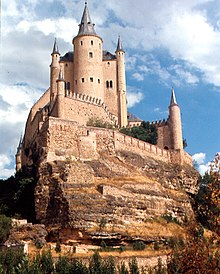
My photo shows the lookout tower on the extreme right above.
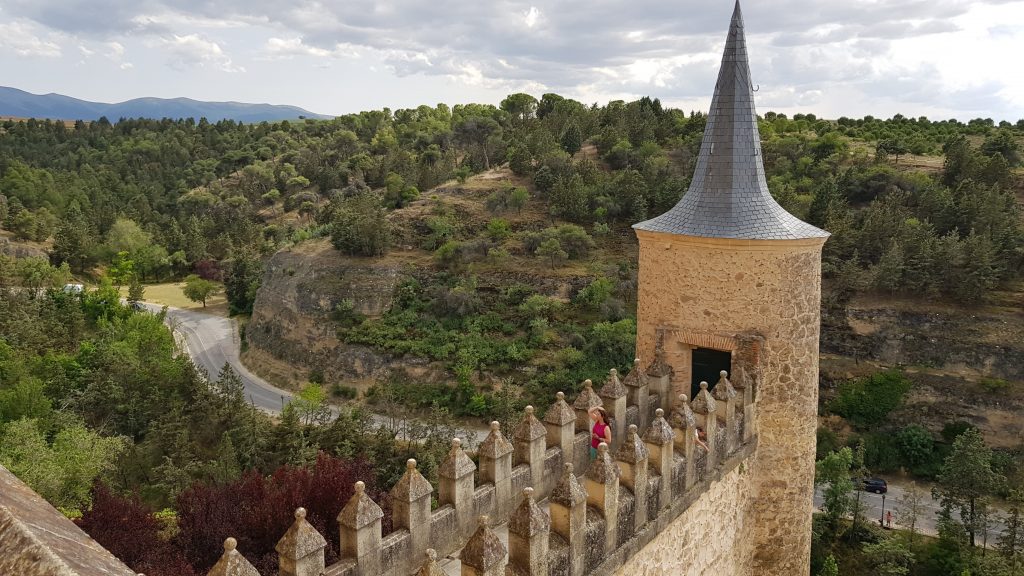
The battlements of the palace have some magnificent views of the surrounding countryside.
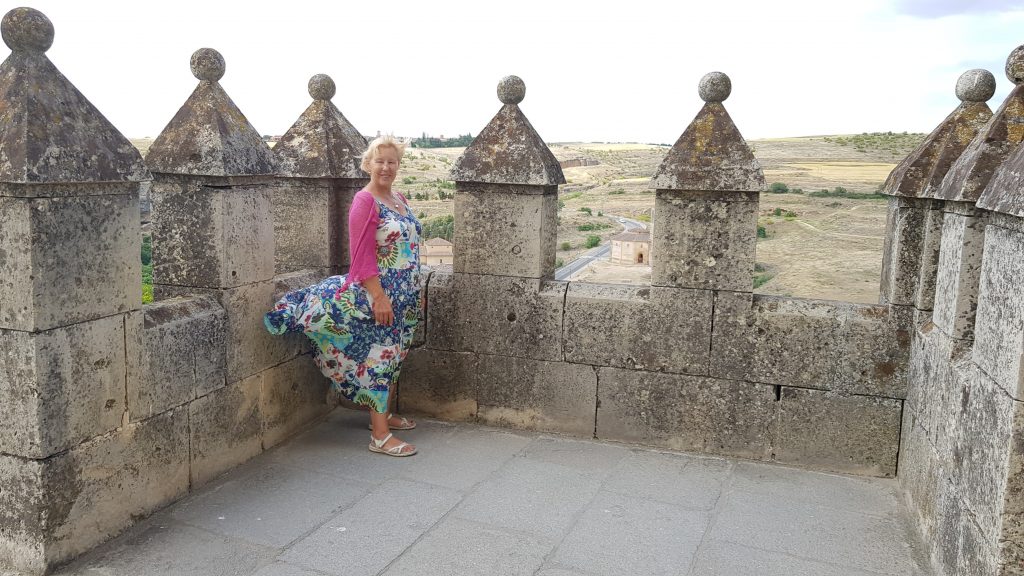
And the rooms had large collections of armour and weaponry…
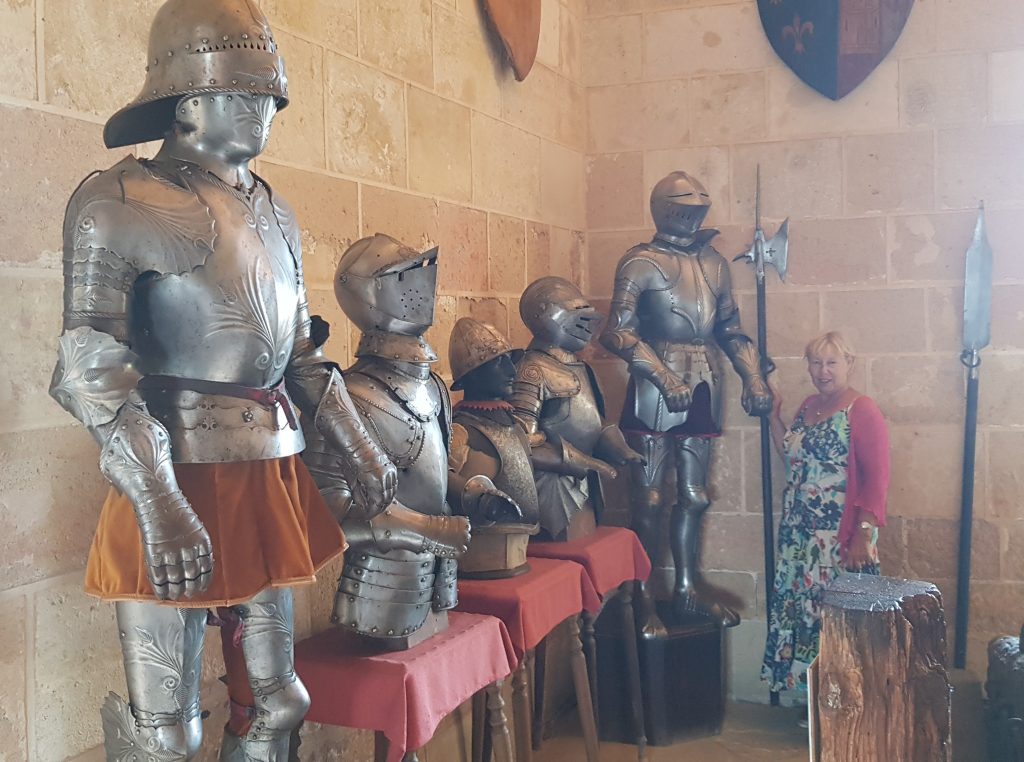
… and fancy ceilings…
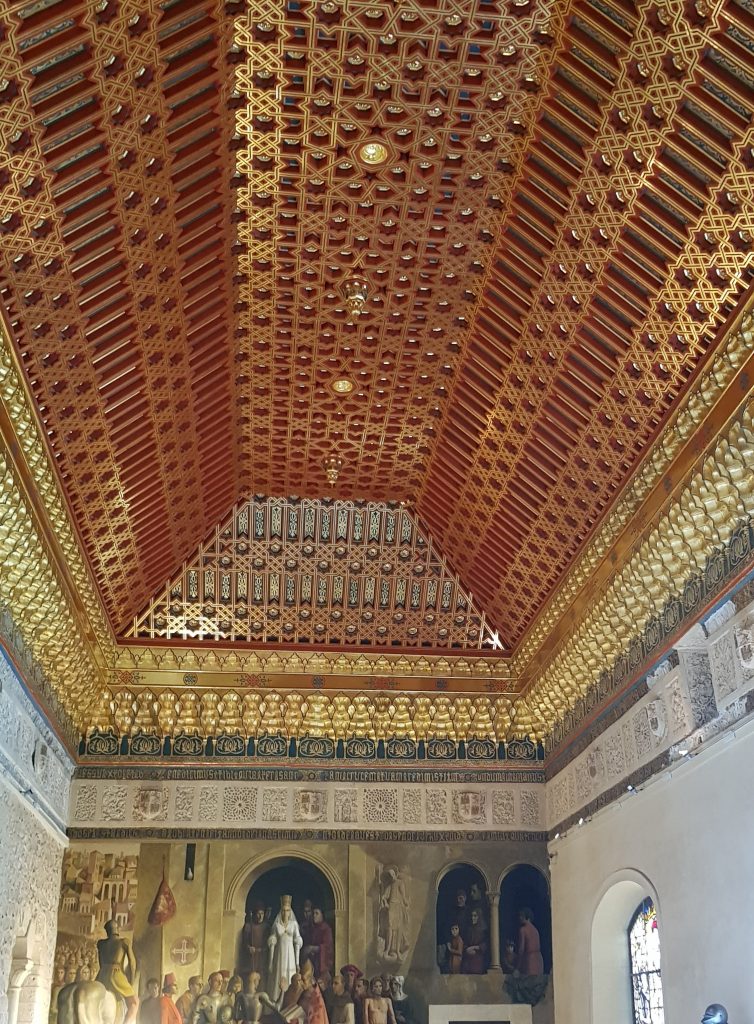
So Segovia was quite a tourist centre. There were a lot of tourists. Groups of Chinese and Japanese all following upside down umbrellas or sticks with pink teddy bears attached.
Next stop is going to be Plasecia to Camping Montfragüe which we visited last year.
